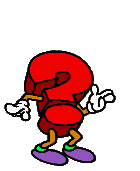1. Put the verb in the yo form of the present tense.
2.Drop the -o from the end of the verb.
3. Add the correct subjunctive ending:
-AR verbs: -e, -es, -e, -emos, -éis, -en
-ER/-IR verbs: -a, -as, -a, -amos, -áis, -an
POR EJEMPLO: comer —> como —> com- —> coma
 But what about...verbs with irregular yo forms??
But what about...verbs with irregular yo forms??
Just follow the normal stops to form the present subjunctive! Spelling changes that you see in verbs with irregular yo forms carry through ALL forms of the present.
POR EJEMPLO: tengø —> tenga, tengas, tenga, tengamos, tengáis, tengan
 But what about...stem changing verbs??
But what about...stem changing verbs??
Stem changing verbs have almost the exact same stem changers that you see in the present tense of the indicative. -AR, -ER and -IR stem changes change normally in the boot (that is, all forms except nosotros and vosotros).
POR EJEMPLO: pueda, puedas, pueda, podamos, podáis, puedan
In addition to the normal stem changes, -IR verbs also change in the nosotros and vosotros forms...e->i and o ->u
POR EJEMPLO: duerma, duermas, duerma, durmamos, durmáis, duerman
 But what about...-car, -gar, -zar verbs??
But what about...-car, -gar, -zar verbs??
Yes, you do have to remember your -car, -gar, -zar verbs in the present tense of the subjunctive. AND -guir and -ger as well! For these verbs, the spelling change carrys through ALL forms of the subjunctive.
POR EJEMPLO: sacar -> saque, saques, saque, saquemos, saquéis, saquen
 But what about...irregulars??
But what about...irregulars??
Like usual, there are a few irregulars you have to remember! Here are a few of them:
DAR: dé, des, dé demos deis den
ESTAR: esté, estés, esté, estemos, estéis, estén
SABER: sepa, sepas, sepa, sepamos, sepáis, sepan
SER: sea, seas, sea, seamos, seáis, sean
IR: vaya, vayas, vaya, vayamos, vayáis, vayan



















